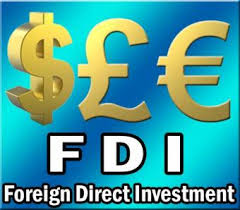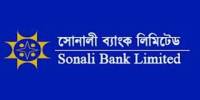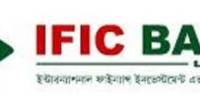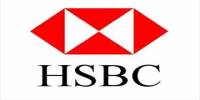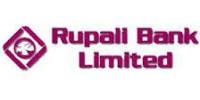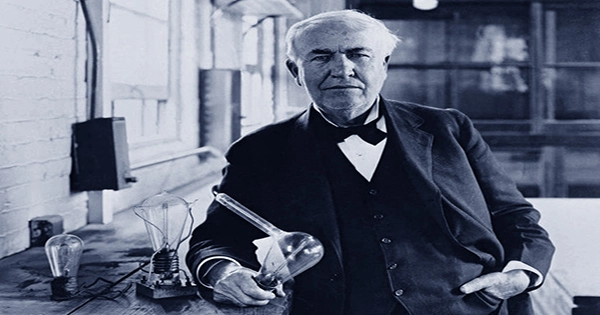Foreign Direct Investment Inflow in Saudi Arabia
The Kingdom of Saudi Arabia has proved itself as a successful foreign direct investment inflow during the year of 2009 (Li. and Filer, 2007). The foreign direct investment has been increased due to the several reasons. The foreign direct investment or FDI inflow in the Kingdom of Saudi Arabia was US $35.5 billion in the year of 2009 (Hill, 2009). The Foreign direct investment was reduced by seven percent considering the previous year. In the previous year it has incurred its net foreign direct investment amounted US $38 billion (Spiegel, 2009). The net foreign direct investment has incurred huge benefit to this economy. The internal stock of the country had been increase to the US $147 billion
(Lee, 2010). The huge investment considered as the lower value of the aspirations of Saudi Arabian General Investment Authority. The authority has declared this inflow below the aspiration of the expectations. The Saudi Arabian economy has the considerable potentiality to the active investment of the country (World Bank, 2004-2007). The foreign direct investment is shown in the following part of the chapter which is focused in the figure one. This figure is focused on the inflow and out of the foreign direct investment in the Saudi Arabia (Klapper, Lewin, and Quesada, 2009). This figure shows consecutive five years of foreign direct investment in the Saudi Arabian economy. This figure shows that, the gradual increase in the foreign direct investment inflows and the stock of the foreign direct investment (Almounsor, 2008). The increase in the inflow considerably increases the outflow of the foreign direct investment. Let’s have a look on the following graphical representation.
The foreign direct investment inflow is huge due to the active patronisation of the infrastructural development and the investor friendly laws (Chrisafis, Black, and Tranynor, 2009). The United Nations Conference and Development (UNCTAD) have shown huge potential factors to increase the foreign direct investment inflow within the economy of the country. The economy has shown huge potential factors to increase the foreign direct investment in this economy (UNCTAD, 2007). UNCTAD believes that the Kingdom of Saudi Arabia has the huge potential factors to take the investor’s attraction in the foreign direct investment. The foreign direct investment project is completely having the huge options to develop the infrastructure for the investor analysis. The development of the various sectors has been able to increase the potentiality of the foreign direct investment project. Here we have the huge information to analyse the foreign direct investment inflows in the Kingdom of Saudi Arabia. The theoretical analysis is given in the following part of the paper.
FDI to Establish Companies in Saudi Arabia
The foreign direct investment has mainly depends on the establishments of the organisation in the Saudi Arabia (Coeurdacier, Santis and Aviat, 2009). It has developed it’s to the outcomes of the investment outcomes. The Kingdom of Saudi Arabia has got huge development in the sector of the foreign direct investment (Coeurdacier, Santis and Aviat, 2009). The foreign direct investment has contributed to establish huge companies in the Saudi Arabia (Lee, 2010). The kingdom of Saudi Arabia has got huge development in the sector of manufacturing the refined petroleum products, manufacturing of chemicals and the chemicals product, real estate and infrastructure, building contracts, financial service like Banking and Insurance, mining, gas exploration, transportation, telecommunication and information technology (Lee, 2010). The following figure two focuses o the development of the companies through the foreign direct investment inflows in the country. The development of the companies is resulted from the increased foreign direct investment inflow of the Kingdom of Saudi Arabia. Let’s go through the figure to better understand of the development of the organisation.
Impact of the Foreign and Joint Investments
The foreign direct investment has the positive impact on the economy of the Saudi Arabia. In this research paper we found that the joint and foreign direct investment has a positive influence on the economy. The totality of investment is increased in the economy which increases the economic development of the country. The economic development comes from the actions of the investment. The foreign direct investment and joint foreign direct investment has huge impact on the development of the economy (Hübler, Menkhoff, and Suwanaporn, 2008). The development is increased influence to the economy of the country which is developed by the influence of the huge improvisation of the economy. The employment opportunity is created in the economy due to the economic development and infrastructure development of the economy which creates huge employment opportunity (MacDermott, 2007). The positive impact of the foreign direct investment is listed in the following.
- Investment stock is increased.
- Creation of employment opportunity.
- Increased in the total investments.
- FDI inflow creates opportunity for the development.
- Total labour outcomes are created for the development of the economy.
- The country’s GDP is increased.
- Exports are increased.
- Added value to the economy
- Increase export
- Local Purchase increased.
Here the impact of the study is described in the following. The following information is given in the following part of the study. This figure is brought out the positive impact in the economy of the Saudi Arabia.
Benefits of FDI inflow in Saudi Arabia
The foreign direct investment is designed to invest for long term, which brings the positive impact in the economy in long run. The Foreign direct investment inflow comes from the other country to the economy of the Saudi Arabia. The economy of the Saudi Arab is highly depended on the foreign direct investment to transfer the expertise in the technology of the investment (Wooldridge, 2010). The foreign direct investment has huge global benefit to the economy of the Saudi Arabia such as helping economic growth, improving domestic and foreign trade, bringing employment opportunity, transferring the technology and knowledge. The following figures are brought out the countries, which are investing the majority portion of the foreign direct investment. The foreign direct investment is designed to mutual transfer of the benefits. Prior to the country’s investment in the economy the investment analysis on the benefit of the foreign direct investment is listed in the following.
Helping the Economic Growth
The economic growth of the Saudi Arabia is developed for the foreign direct investment in the economy. The investor country makes profit on its investment which needs to contribute the relative share of the profit in the economy. This share is considered as the taxes and duties on the profit of foreign direct investment (Gwartney, and Lawson, 2008). The Kingdom of Saudi Arabia has a positive indication to the economy by enforcing the tax and other duties on the invested product and services. The investment of the economy is highly focused on the basic development of the economy which has positive increase indication to generate the opportunity of the employment and others opportunity for the Saudi Arabian and the others migrated people of the country.
Improving Trade
The foreign direct investment in the Kingdom of Saudi Arabia has made the infrastructure development. The infrastructure of the country is highly developed due to the foreign direct investment in the economy. The investment in the trade and other sector has the great improve to its economy of the country (Petroulas, 2007). The infrastructure development has made it possible to increase the trade benefits within the country. The kingdom of Saudi Arabia has got huge development to its economy for the betterment of the improvement in the economy.
Bringing the Employment Opportunities
Saudi Arabia gets huge foreign direct investment in its economy which helps to improve the trade between the nations and economic growth. The economic growth is considered as the faster when the Gross Domestic Product (GDP) increased. The GDP increased when the unemployment is zero or decreased. The foreign direct investment creates some options for the economy of the Saudi Arabia which determined to increase the development of the trade in the domestic and foreign country (Seetanah and Khadaroo, 2007). This improvement of trade is generated by the increased opportunity of employment. The economy of the Kingdom of Saudi Arabia will be increased when the resources of the economy will highly utilised. The maximum utilisation is come from the employment opportunity of the country.
Transferring the Technology and Knowledge
Knowledge is the intangible things in the economy which increases the total output of the economy. The development activities are shared through the process of the technology and transfer of the knowledge. The knowledge and technology is the vital part of the economy. Foreign direct investment in the Saudi Arabia mentioned the smooth sharing of knowledge and technology sharing, which ensures the maximum productivity of this country (Kaufmann, Kraay, and Mastruzzi, 2007).
Analysis of FDI from Different Countries
The Kingdom of Saudi Arabia has huge impact on the global operation of the organisational development. The development is highly depends on the factors in the investment. The top investors in the Saudi Arabia have huge options to increase its credibility to arrange the business of the organisation. The total output of the organisation has huge impact on the economy of the Kingdom of Saudi Arabia. Saudi Arabia gets the highest foreign direct investment from the USA and Asia is highly interested to invest in the Saudi Arabia (Chrisafis, Black, and Tranynor, 2009). The top 30 investors are shown in the figure of the analysis. This will found the definite positive outcomes in the global output of the organisation. The global output is finally mixed with investors of the country. The investors in the foreign direct investment are highly influenced. So the influence o the Saudi Arabian economy is described in the following part of my research paper (Chrisafis, Black, and Tranynor, 2009). The study is demanding the opportunities in the operation of the investor’s foreign direct investment which is listed as follows.
On the other hand, we have got the data to analyse the individual assessment in the Saudi Arabian economy. The USA is the largest investor in the Saudi Arabian economy from the last consecutive years. We have found huge investment top 30 countries’ investment in the Saudi Arabian economy. The investors intend to invest due to the low risk of loss (Alborzi, 2010). For that reason it has got huge investment opportunity to the economy. The investment opportunity is largely depends on the gradual development of the Saudi Arabian infrastructure development. The infrastructure is highly developed due to the gradual development of the business pattern. The following figure 5 is brought the foreign direct investment by country (Busse, and Hefeker, 2007). From the figure we have found USA gradually is gradually increasing its investment to the Saudi Arabian economy to increase the positive feedback from the investment. The top 30 investors of Saudi Arabian economy are listed as follows.
Here the analysis brings the FDI inflows to the economy of the Saudi Arab results the huge investment of USA (Lee, 2010). In 2009 USA has invested US $5.8 billion as foreign direct investment, which followed by another Arab country Kuwait. Kuwait invested US $4.3 billion. The third largest investor in the Saudi Arabian economy is UAE, who invested US $3.8 billion in this economy (Wooldridge, 2010). France is the largest investor from Europe who invested US $2.6 billion in the economy (Lee, 2010). The economy of the Saudi Arab got these foreign direct investment due to the comprehensive business environment and investment in this country (Hussain, Matlay, And Scott, 2008).
The Sector of Foreign Direct Investment
The investors are not will to invest their money in difficult sector. The Saudi Arabian economy is highly enhanced the contract flexibility to invest in the economy. The sector of the foreign direct investment inflows is shown in the figure 6. This figure brings the percent invested in the different sectors of the Saudi Arabian economy.
The direct investment inflows in the following figures bring the result of the total percent of the FDI inflows from different countries in the Saudi Arabia. The total foreign direct investment inflow is shown the following with percent of total investment from different countries (Alborzi, 2010).
Foreign Direct Investment Stock in Sectors
The foreign direct investment in the economy is largely increased. The stock is also increased from the previous year of the foreign direct investment stock. The portion of the total stock is graphically presented in the figure 8, which found the quantitative analyses of foreign direct investment. The portion of different sector is presented by the percent of the total foreign direct investment inflows.
Foreign Direct Investment Inflows by Sectors
The real estate sector is the most attractive and holds the highest foreign direct investment inflows in the economy. The Real Estate sector is the lucrative and profitable business for the investors. Most of the investors can influence to increase the development of the infrastructure to develop the trade environment within a country (Lee, 2010). The portion of the real estate investment is given in the following part of the paper. The following figure is developed from the view point of the foreign direct investment to analyse the possible outcomes of the business development in the organisation. The sectors of the foreign direct investment is analysed in the following part of my paper with the definite portion of the direct investment inflows (Lee, 2010).
Analysis of the Study
The study has much more data on the foreign direct investment inflows in the Saudi Arabian economy. The economy is highly developed by the foreign direct investment inflows. The country has huge advancement to its economy due to the development of the agriculture and fishing, mining, industry, electricity, gas, water supply, transportation systems, financial service ad insurance, hotel and restaurant, real estate sector and others. The actual development has taken place due to the huge foreign direct investment in the Saudi Arabia. The kingdom of Saudi Arabia also has the foreign direct investment outflow to the other country. The balance of payment is adjusted with the development of the study in the financial service of the actual inflows and stocks. The actual stocks and development is presented in the following part of the paper, which has brought the analysis through figure. The figure is a complete study of y research paper. This figure finds the factor of the development presenting the actual inflows after the adjustment of the investments.
Empirical Analysis
Actual FDI and Output
The relationship between actual FDI and output growth has been studied intensively in the literature. In the neo-classical growth models output growth is determined by the exogenous labour force growth and technological progress factors whereas FDI would have short-run effects only. The endogenous growth theory strand, on the other hand, studies the channels through which FDI can result in long-run economic growth. The following tables present the results with respect to the KSA where causality flows are detected with respect to actual FDIs only and output is measured by the KSA’s real GDP variable.
The following model was estimated by OLS for the period 1995-2011 over which the data are jointly available for all variables appearing in the regressions. Economic variables are taken in logarithmic forms and denoted by lower-case letters. Results are given in table (2a) below for contracted FDI (fdic):
Determinants of Contracted FDI
Static Formulation
Variable | Coefficients | |||
C | -5.897 | -6.329 | -6.771 | -13.155 |
gdp | ||||
grgdp | – | – | – | |
expo | ||||
impo | – | – | ||
wage | ||||
rate | ||||
dinv | – | |||
cpfr | ||||
0.990 | 0.990 | 0.990 | 0.933 | |
0.977 | 0.980 | 0.982 | 0.895 | |
0.028 | 0.026 | 0.025 | 0.060 | |
F | ||||
d | 3.004 | 2.853 | 2.876 | 1.488 |
Where R2 is the coefficient of determination, is its adjusted version, is the standard error of the regression, d is the Durbin-Watson statistic and figures in parentheses are t-ratios while those in squared brackets are p-values. The risk variable exerted its positive influence on FDI in an indication of the fact that the higher the score, the lower the risk and hence the higher the contracted FDI into the Kingdom.
Findings of the Analysis
This chapter is developed on the investment factors which have the comprehensive study from the different source. The foreign direct investment analysis has given me the following findings in through the study of my research. The outcomes of the study are listed in the following part f the research.
- The top sectors of Saudi Arabia which generates FDI.
- The top investors of the FDI inflows in Saudi Arabia.
- The impact of the foreign direct investment in the Saudi Arabian Economy.
- Government support to increase the foreign direct investment inflows to the Saudi Arabia.
- Developed the economic zone to increase the foreign direct investment.
- Major portion of the employment depends on the foreign direct investment inflows in the economy.
- The FDI stock is increasing.
- New companies and country intend to enter into the economy.
- Total investment
- Actual inflows by identifying the individual sectors.
Summery
From the above discussion we have found that the foreign direct investment inflows to the economy of the Saudi Arabia. The Kingdom of Saudi Arabia is willing to develop its foreign direct investment with the analysis of the current inflows. The country also encouraging the investors to contribute in the foreign direct investment offering huge opportunities, even it offers to invest jointly within the economy. The economy of the Saudi Arabia highly depends on the foreign direct investment and the investors also have the benefit. So the mutual benefit is existed in the foreign direct investment of the economy.
Conclusion
The policy makers of the Kingdom of Saudi Arabia need to consider the contributions of foreign direct investment inflows in the Economy. The policy makers need to consider the positive and negative contribution of the foreign direct investment to the economy. The foreign direct investment may not bring the positive contribution to the economy. Policy makers always think the foreign direct investment has huge positive impact on the economy with increasing employment rate, development of the foreign trade, economic growth, and infrastructure development for the business in the considerable way (Fuller-Love, 2008). The sector of the foreign direct investment may change or the investors may face the employment deficit in the economy.
The large investors need to consider the probable constraint in the economy. Investment never is considered as risk free due to the uncertainty in the economy. The sectors of the foreign direct investment need to consider the employment opportunity and the level of employment rate. The domestic employee of the definite sector must be considered as the level of the employment opportunity of the investment. The generalisation in the economy and the investment can be undertaken easily to the business of the ideal position to make benefit for the economy. The Kingdom of Saudi Arabia has huge parts to influence the development of the infrastructural development in the context of the huge projects in the employment decision making (UNCTAD, 2007).
In this paper we have found the huge contribution of the foreign direct investment to the economy. The economy of the Saudi Arabia has got possible foreign direct investment in its economy which has balanced the economy during the global downturn of the economy. The secured projects and sectors also have been developed to increase the foreign direct investment in the economy to increase the degree of balance of the economy in the current position. The strengths of the economy are to develop the economy of the numbers of the secured application in the economy.
To balance the economy, the Kingdom of Saudi Arabia has developed its service sector to attract the investors in the economy. This position is too difficult to attract the investors in the economy. But the economy has attracted huge foreign investors to invest and the investors got huge investment success in the largest foreign direct investment in the economy of the Saudi Arabia. The manufacturing sector is less secure but the country is getting increased the foreign direct investment in this sector. It may influence to generate negative impact in the economy. The loss or negative output of the investment may retreat the investors from the economy. The generalised process of the economy needs to consider for bringing the positive outcomes of the project. The economy may face huge negative outcomes in the sector of the carbon energy generation, electric vehicles, and new public transport solutions, healthcare. The opportunity for the new investment is highly conducted by the investors. Now the Kingdom of Saudi Arabia considering the best opportunity to attract the new investors and providing maximum opportunity to the current investors, who already made direct investment to the economy of the Saudi Arabia.
Recommendation
The phenomenon development in the economy of the Saudi Arabia the foreign direct investment has been a key factor of the developing investment in the Saudi Arabia (Aderinokun, 2009). The flow of investment is almost constant in the economy of the Saudi Arabia. The Kingdom of Saudi Arabia has undertaken in the variety of functions in the operation of the economic development of the country (Aizenman, Pinto and Radziwill, 2007). The possible actions and attempt has been taken in the sector of manufacturing, assembly, business outsourcing and customer service. The results from the research paper indicate the foreign direct investment in the Saudi Arabia is much more important to increase the development project in the economy. The following recommendations from the analysis are considered to analyze the whole research project. The following recommendation is made to increase the development of the economy in the context of foreign direct investment.
- The foreign direct investment is reduced from the 2008. So the Kingdom of Saudi Arabia needs to focus on the investment opportunities to attract the investors to invest in the economy.
- The impact of the national policy if the foreign direct investment needs to revise. The policy of the foreign direct investment is also being considered in the increasing investment in the economy.
- The Kingdom of Saudi Arabia needs to reform the opportunities for the investor to increase the foreign direct investment, which make the investors positive in the economy.
- This country need to consider the investment activities in the current growing market of the world. The investment activities need to consider the economic attractiveness in the Saudi Arabia.
- The expansion strategy of the economy need to clearly define.
- Most of the investors try to get the tax exemption opportunities to their investment, so the Saudi Arabia tries to increase its activity in the economic barrier.
- The economic barrier in the foreign direct investment need to reconsider.
- The beneficial impact of the employment opportunity to the investment activity of the investors needs huge support.
- Infrastructural development of the economy in the Saudi Arabia need to consider the attractiveness of its investment proposal.
- The regional gap in the economy need to consider the investment proposal to increase the foreign direct investment in the Kingdom of Saudi Arabia.
References
Aderinokun, K. (2009), “CBN Pegs Maximum Interest Rate at 22 Percent”, this Day Newspapers, 24 March, Leaders & Company Ltd, Nigeria. Available at http://www.thisdayonline.com (visited on 24 March, 2009).
Aizenman, J., Pinto B. and Radziwill, A. (2007), “Sources for Financing Domestic Capital- Is Foreign Saving a Viable Option for Developing Countries?”, Journal of International Money and Finance, Volume 26, pp 682-702.
Amin, M.R. and Banerjee, S., (2007), “Constraints and Contingencies of the Small Business: A Comparative Perspective”, International Business & Economics Research Journal, Volume 6, No. 9, pp 59-66.
Awokuse, T.O. (2008), “Trade Openness and Economic Growth: Is Growth Export-Led or Import-Led? Applied Economics, Volume 40, pp 161-173.
Chrisafis, A., Black, I and Tranynor, I. (2009), “G20 Walkout Threat from Nicolas Sarkozy”, The Guardian News and Media Limited.
Chrisafis, A., Black, I and Tranynor, I. (2009), “G20 Walkout Threat from Nicolas Sarkozy”, The Guardian News and Media Limited.
Creswell, J. W., and Plano Clark, V. L. (2007), Designing and Conducting Mixed Methods Research Thousand Oaks, CA: Sage.
Edwards S. (2007), “Capital Controls, Capital Flow, Contractions and Macroeconomic Vulnerability”, Journal of International Money and Finance, Volume 26, pp 814-840.
Fuller-Love, N., (2008), “Culture Clash: A Case Study of Rover and BMW”, International Business Research, Volume 1, No. 1, pp.93-100.
Gala, P. (2008), “Real Exchange Rate Levels and Economic Development: Theoretical Analysis and Econometric Evidence” Cambridge Journal of Economics, Volume 32, No.2, pp 273–288.
Godffrey, T. (2007), “Foreign Direct Investment: Financial Services in Wales” Paper presented at the Small Business Finance and Banking Services in Emerging and Developing Countries Conference April 17th & 18th 2007, University of Glamorgan.
Greene, J. C. (2008), “Is Mixed Methods Social Inquiry a Distinctive Methodology?” Journal of Mixed Methods Research, Volume 2 No. 1, pp 7-22.
Hall, B. and Howard, K., (2008), “A Synergistic Approach: Conducting Mixed Methods Research with Typological and Systemic Design Considerations”, Journal of Mixed Methods Research Volume 2, No. 3, pp 248-269.
Hübler, O., Menkhoff, L. and Suwanaporn, C. (2008), “Financial Liberalisation in Emerging Markets: How Does Bank Lending Change?” The World Economy, pp 393-415.
Hussain, J., Matlay, H. And Scott, J.M. (2008), “Financial Education in Small Ethnic Minority Businesses in the UK”, Education + Training, Volume 50, No.8/9, pp 737-747.
Laidler, D. (2008), “Keynesian Revolution”, The New Palgrave Dictionary of Economics. Second Edition, In Steven N. Durlauf and Lawrence E. Blume (Eds.) Palgrave Macmillan, The New Palgrave Dictionary of Economics Online, Palgrave Macmillan (Accessed 17 February 2009).
Lutao, N. (2007), “Economic Liberalization for High-Tech Industry Development? Lessons from China’s Response in Developing the ICT Manufacturing Sector Compared with the Strategies of Korea and Taiwan”, Journal of Development Studies, Volume 43, Number 3, pp 562-587(26).
Zainol, Z, Shaari, R and Ali, H.M. (2008), “A Comparative Analysis of Bankers’ Perceptions on Islamic Banking”, International Journal of Business and Management, Volume 3, No.4, pp 157-168.
Saunders M. with Lewis P. & Thornhill A. (2007), ‘Research Methods for Business Students’, 4th edition, London, Pearson Education
Robson, C. (2007), ‘How to do a Research Project: A Guide for Undergraduate Students’, Oxford: Blackwell Publishers Ltd
Saunders. M., Lewis, Ph. and Thornhill, A. (2007), ‘Research Methods for Business Students’, 4th edition, Harlow: FT Prentice Hall
UNCTAD (2007), ‘World Investment Report: Transnational Corporations, Extractive Industries and Development’, United Nations, 2007
Wagner, O and Peters, M (2009). Can association methods reveals the effects of internal branding on tourism destination stakeholders? .Journal of place Management and Development, Vol.2No1, pp52-69.
Windsor, D. (2007), “Toward a global theory of cross-border and multilevel corporate political
activity”, Business & Society, Vol. 46 No. 2, pp. 253-79.
World Bank (2004-2007), World Development Indicators, World Bank, Washington, DC.
United Nations (UN) (2007), World Investment Report: Transnational Corporations, Extractive
Industries and Development, United Nations, New York, NY.
Reaz, M. (2007), “Corporate governance around the world: an investigation”, Journal of American Academy of Business, Vol. 11 No. 2, pp. 169-75
Li, S. and Filer, L. (2007), “The effects of the governance environment on the choice of investment mode and the strategic implications”, Journal of World Business, Vol. 42 No. 1, pp. 80-98.
Habib, A. (2008), “Corporate transparency, financial development and the allocation of capital:
empirical evidence”, ABACUS, No. 1, pp. 1-21.
Li, S. and Filer, L. (2007), “The effects of the governance environment on the choice of investment mode and the strategic implications”, Journal of World Business, Vol. 42 No. 1, pp. 80-98.
Hill, C. (2007), International Business, McGraw-Hill, New York, NY.
Habib, A. (2008), “Corporate transparency, financial development and the allocation of capital:
empirical evidence”, ABACUS, No. 1, pp. 1-21.
Buckley, P., Clegg, J., Cross, A., Liu, X., Voss, H. and Zheng, P. (2007), “The determinants of
Chinese outward foreign direct investment”, Journal of International Business Studies,
Vol. 38, pp. 499-518.
Buckley, P., Devinney, T. and Louviere, J. (2007), “Do managers behave the way theory suggests?A choice-theoretic examination of foreign direct investment location decision making”,
Journal of International Business Studies, Vol. 38 No. 7, pp. 1069-95.
Rubin, J.C. (2007), “Lagging far behind: women in the Middle East. Middle East”, Review of
International Affairs, Vol. 11 No. 2, available at: http://meria.idc.ac.il/journal/2007/issue2/
jv11no2a2/ (accessed 11 May 2010).
Palmer, M. (2007), The Politics of the Middle East, 2nd ed., Thomson Wadsworth, Belmont, CA.
Kandil, M. (2009), “Determinants of institutional quality and their impact on economic growth in
the MENA region”, International Journal of Development Issues, Vol. 8 No. 2, pp. 134-67.
Kaufmann, D., Kraay, A. and Mastruzzi, M. (2009), “Governance matters VIII: aggregate and
individual governance indicators 1996-2008”, World Bank Policy Research Working Paper
No. 4978. Washington, DC, June.
Klapper, L., Lewin, A. and Quesada, J.M. (2009), “The impact of the business environment on the business creation process”, World Bank Policy Research Working Paper No. 4937,
Washington, DC, May.
Busse, M. and Hefeker, C. (2007), “Political risk, institutions and foreign direct investment”,
European Journal of Political Economy, Vol. 23 No. 2, pp. 397-415.
Abootalebi, A. (1999), “Middle Eastern economies: a survey of current problems and issues”,
Vol. 3, available at: http://meria.idc.ac.il/journal/1999/issue3/jv3n3a6/ (accessed
11 May 2010).
Acemoglu, D. and Robinson, J.A. (2006), Economic Origins of Dictatorship and Democracy,
Cambridge University Press, New York, NY.
Alborzi, A. (2010), “Sherkathaye Almani Dar Sarkobe Mardome Iran Naghsh Darand.
Radiofarda”, available at: www.radiofarda.com/content/f3_stopthebomb_germany_Iran/
1977572/ (accessed 10 March 2010).
Almounsor, A. (2008), “Capital flight accounting and welfare implications in the MENA region”, Review of Middle East Economics and Finance, Vol. 4 No. 2, pp. 1-67.
Gwartney, J. and Lawson, R. (2008), Economic Freedom of the World: 2008 Annual Report, The
Fraser Institute, Vancouver.
Kaufmann, D., Kraay, A. and Mastruzzi, M. (2007), “Governance matters VI: aggregate and
individual governance indicators 1996-2006”, Policy Research Working Paper Series, The
World Bank, Washington, DC.
Kolstad, I. and Villanger, E. (2008), “Determinants of foreign direct investment in services”,
European Journal of Political Economy, Vol. 24 No. 2, pp. 518-33.
MacDermott, R. (2007), “Regional trade agreement and foreign direct investment”, North
American Journal of Economics and Finance, Vol. 18 No. 1, pp. 107-16.
Wooldridge, J.M. (2000), Introductory Econometrics: A Modern Approach, South-Western,
Cincinnati, OH.
Petroulas, P. (2007), “The effect of the euro on FDI”, European Economic Review, Vol. 51 No. 6,
pp. 1468-91.
Spiegel, M.M. (2009), “Monetary and financial integration in the EMU: push or pull?”, Review of International Economics, Vol. 17 No. 4, pp. 751-76.
Lee, S.L. (2010), “Are the returns of the Spanish real estate market converging with the rest of
Europe?”, manuscript.
Lee, S.L. (2010), “Are the returns of the Spanish real estate market converging with the rest of
Europe?”, manuscript.
Lee, S.L. (2009), “Is the UK real estate market converging with the rest of Europe?”, Journal of
European Real Estate Research, Vol. 2 No. 1, pp. 18-32.
Coeurdacier, N., De Santis, R.A. and Aviat, A. (2009), “Cross-border mergers and acquisitions and European integration”, Economic Policy, Vol. 24 No. 57, pp. 55-106.
Ernst & Young (2010), Ernst and Young’s 2010 European Attractiveness Survey,
available at: http://.ey.com/GL/en/Issues/Business-environment/2010-Europeanattractiveness-
survey.
Palit, A. and Nawani, S. (2007), “Technological capability as a determinant of FDI inflows:
evidence from developing Asia & India”, Working Paper No. 193, Indian Council for Research on International Economic Relations, New Delhi.
Seetanah, B. and Khadaroo, A.J. (2007), “Foreign direct investment and growth: new evidences
from Sub-Saharan African countries”, paper presented at Economic Development in Africa
2007, CSAE Conference.
UNCTAD (2007), World Investment Report, UNCTAD, New York, NY.

